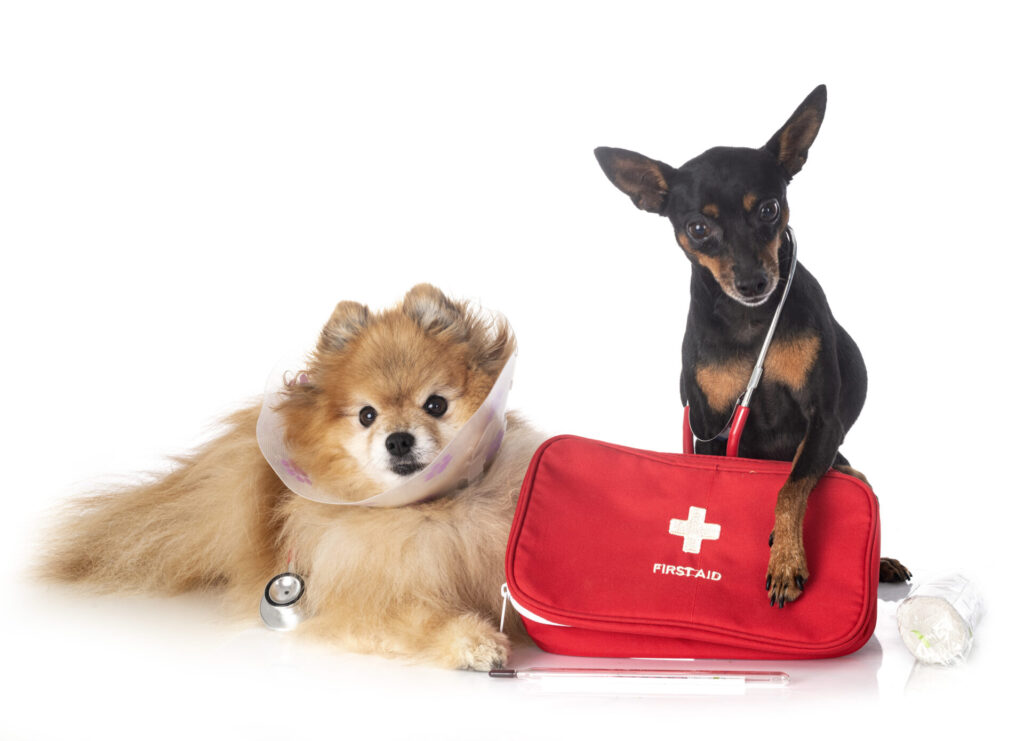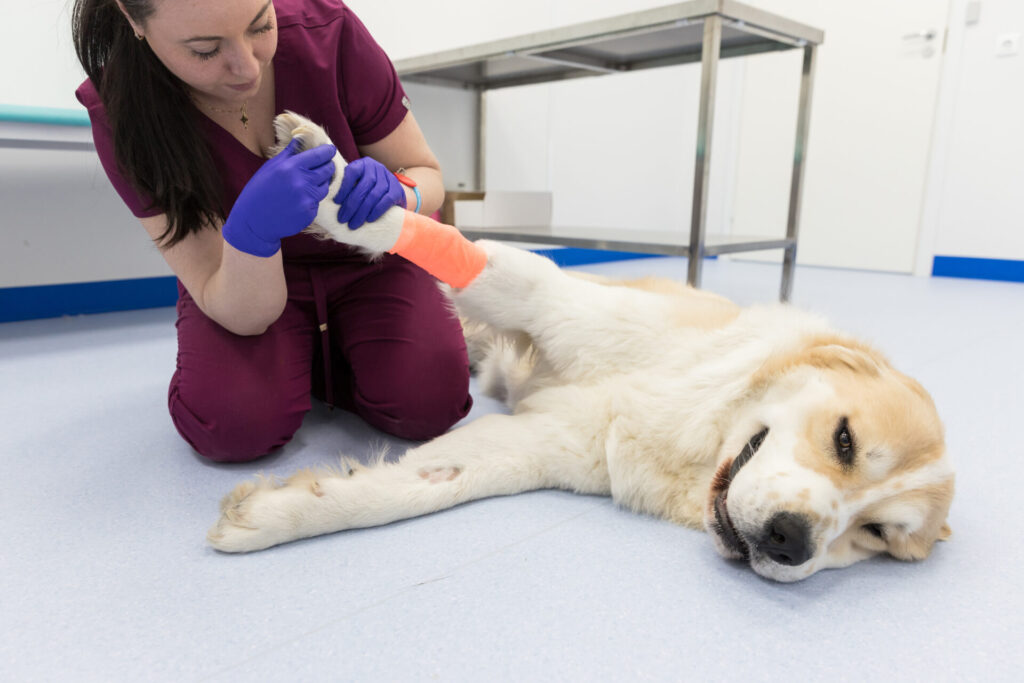The first twenty-four hours after your dog tears their ACL are critical for long term recovery. So, what can you as a dog owner do the first few moments, hours following a hind knee injury in your dog?
A torn ACL in a dog is by far the most common orthopedic injury in dogs, and the severity of the tear will greatly determine how you react in those first few critical hours.
The first thing to distinguish is whether your dog has experienced a tear/sprain or a complete rupture.
If a complete rupture has occurred and your dog’s hind knee is unable to bear any weight at all then your actions will be different from a less serious injury. If there is total lameness in one of the hind legs and your dog cannot walk at all, then you will likely need to go straight to the veterinarian clinic.
If after a particularly energetic walk, run, or play time you notice your dog limping on the way home, then your actions in those first few hours following the injury can occur at home.
Just like humans the RICE treatment works for dogs who have sprained their hind knee.
The First Call To Action Is To Create A Confined Space Where Your Dog Can Rest
You will want to ensure that your dog is putting as little weight on the injured hind knee as is possible in the first hours following injury. Create a comfy space for your dog to lay down in an area of your home with no slip floors, and try to remove any furniture that may tempt your dog to jump up and onto.
Resting the injured leg is critical immediately following the injury, this will allow the body’s own natural healing mechanism to come into play. Stay present with your dog and provide reassuring touch and words.
Do everything possible to ensure that your dog stays off the injured leg for the remainder of the first day. Potty times should be made short and simple. Allow your dog to go outside to do their business, if stairs must be climbed, consider carrying your dog outside to a grassy area where they can go potty.
Provide A Cold Compress to the Injured Area
Your dog may not like this much, but providing a cold compress directly onto the injured area will help to reduce the swelling and improve blood flow to the injured knee. Frozen vegetables work well as they will easily move around the natural shape of your dog’s knee.
Wrapping a rag or dish towel around the cold compress will help with any shock in temperature for your dog. Consider icing the injury once an hour for fifteen minutes the first three days after injury has occurred.
After the first three days you may wish to switch out for a hot compress, but in the initial time after injury be sure that you are using a cold treatment.
Compression and Elevation Will Be Different In Dogs Than Humans
It is unlikely that you will be able to convince your dog to elevate their injured knee, however as long as they are resting and not putting weight on the wounded knee, it should be okay.
You may consider gently wrapping the injured knee the same way you would for a human, but again your dog may resist and try to lick or bite the bandaging off.
So, for the first few days just be sure that your dog is resting as much as possible, and that ice is applied regularly on the hour.
Check In With A Veterinarian After A Few Days For A Professional Opinion
If after three days there is little to no improvement in your dog’s limp and pain levels, you may want to take a visit to your veterinarian clinic for an appraisal of the extent of the injury.
Sometimes surgery is not necessary for minor tears and sprains to the ACL ligament in dogs, but a clinic may suggest it even if it is not necessary. You will need to decide for your dog if healing is possible through conservation management.
It may also be a time to fit your dog for a brace so that their injured knee has some additional support in the first few weeks following injury. Consider finding a pool where your dog can swim, potentially some physical therapy, and acupuncture.
Above all else the critical factor in your dog’s first aid after injury to the ACL is REST and ICE!
Become The Active Solution To Your Dog’s Hind Knee Injury
If your dog is limping after a rigorous run or playtime, be sure to take the limp seriously by encouraging plenty of rest for your dog. Many partial tears and strains to the hind knee of a dog can heal on their own provided the owner takes an active role in recovery.
By following the basic RICE formula you may be able to prevent surgery for your dog, the challenges of these procedures, and your pocket book!


